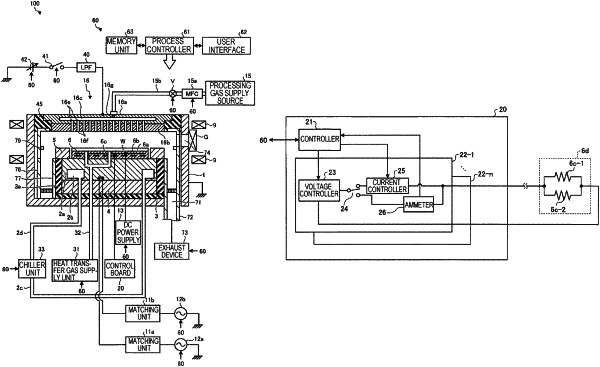| CPC H01L 21/67248 (2013.01) [H01J 37/32724 (2013.01); H01L 21/67103 (2013.01); H01L 21/6833 (2013.01); H05B 1/0233 (2013.01); H05B 3/28 (2013.01); H01J 2237/2001 (2013.01)] | 21 Claims |

|
1. A temperature controlling apparatus comprising:
a base;
an electrostatic chuck disposed on the base and having a plurality of divided regions, the electrostatic chuck including an insulating layer having a first surface and a second surface opposite to the first surface, each of the divided regions including:
a first heater disposed on the first surface of the insulating layer, and
a second heater disposed on the first or second surface of the insulating layer and connected to the first heater in parallel; and
a plurality of control blocks each corresponding to one of the plurality of divided regions, each of the control blocks including:
an ammeter connected to the first heater and the second heater included in a corresponding divided region, and
a current controller configured to control a current provided to at least one of the first heater and the second heater included in the corresponding divided region, based on an output from the ammeter, and wherein the current controller is configured to:
apply a predetermined current to the first heater and the second heater when both the first heater and the second heater are connected; and
apply another current in response to a determination that one of the first heater and the second heater is disconnected, and wherein the another current is different from the predetermined current.
|